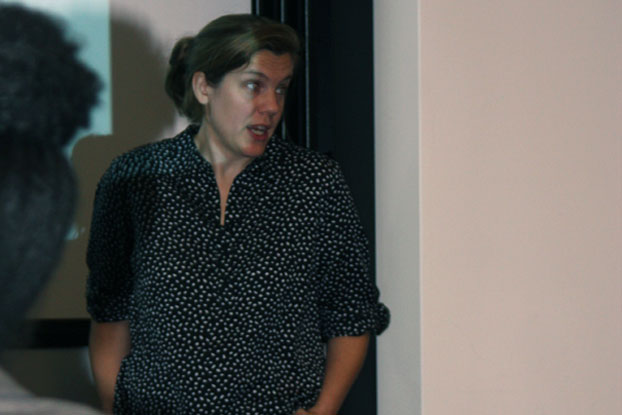
Drug innovation does not occur in a scientific vacuum, and the successful patenting of drugs depends in part on cultural considerations and the competitive advantages of location, according to L.G. Thomas, professor of organization and management at Emory University’s Goizueta Business School, and colleague Kira Fabrizio of Duke University. Their forthcoming paper, “The Impact of Local Demand on Innovation,” examines the global pharmaceutical industry and finds that superior knowledge of demand—which includes tacitly understood knowledge not easily transferred across continents—can explain why certain countries tend to dominate innovation in specific pharmaceutical categories.
When it comes to business innovation in the United States, the landscape is uneven. From computer companies clustered near Silicon Valley to car manufacturers parked side-by-side in Detroit, firms in many industries tend to gravitate towards distinct regions of the country. The economies of agglomeration explain the phenomenon, since competitors located near one another can see lower production costs while boosting specialization. That’s why most hip and knee replacement devices in the United States, for example, are manufactured by firms in Warsaw, Indiana, and most heart pacemakers companies have operations in the Twin Cities. There’s even a geographic aspect to the office furniture business, since the three largest manufacturers of cubicles, chairs, and desks in the United States all are based near the western Michigan town of Zeeland.
This clustering phenomenon spans the globe, with certain nations generating a disproportionate share of particular innovations, says L.G. Thomas, professor of organization and management at Emory University’s Goizueta Business School. In complex industries, technical know-how isn’t easily transferred across great distances, so geographic proximity enables the transfer of tacit knowledge — those things that are implied or inferred, but not openly expressed. While this transfer is usually described in terms of technical knowledge, Thomas argues that it also is important when assessing product demand. In a forthcoming paper titled “The Impact of Local Demand on Innovation,” Thomas and coauthor Kira Fabrizio of Duke University examine the global pharmaceutical industry and find that superior knowledge of demand can explain why certain countries tend to dominate innovation in different categories of medicines. Pharmaceutical companies are better able to understand a market opportunity, the researchers say, when the prospect squares with the social culture underlying their own national healthcare system.
“We tend to think these days that the world is flat, or that there aren’t distinctions across countries anymore,” Thomas says. “But there are distinctions, and they are especially important in complex industries that are highly shaped by the topography of the mind—the tacit understandings about what’s important and what’s not important.”
Demand for pharmaceuticals is based on many factors, from individuals who consume drugs and doctors who prescribe them to regulators who police safety and insurers who negotiate prices and reimbursements. Each of these components of demand is complex, and their interactions even more so, Thomas says. The average lag between patenting a new molecule and selling a new drug product spans more than nine years. So drug innovators must forecast demand out almost a decade to discover a successful product.
These factors help explain not only why demand for pharmaceuticals is tacit but also the sorts of industries where gaining an understanding of demand characteristics is similarly complicated. Information about demand is more likely to be tacit, Thomas says, when innovators must understand not just individual components but how the system functions as a whole. Another characteristic is the speed with which demand changes. When understanding demand requires future forecasts and knowledge of the past sales trajectory, knowledge is more likely to be tacit.
“Knowledge about demand conditions may be differently distributed across firms or countries, and knowledge flows about demand may be ‘sticky’ and difficult to transfer across regions,” the researchers write. “In fact, knowledge about market size and valued product characteristics can be tacit in much the same way that technical knowledge can be tacit. The result is a competitive advantage associated with location that is separable from the benefits associated with geographically mediated technology spillovers.”
To test the hypothesis, researchers looked at innovation patterns by 56 large pharmaceutical companies in nine major markets, including firms such as Pfizer, Bayer, and Takeda. They focused on 262 patented new molecules that the companies launched as products between 1980 and 2001. To assess market demand by country, the researchers compiled sales data from 1992 to 2001 for the various therapeutic classes in the eight most innovative countries plus Belgium. To assess technological expertise of the firms, the researchers counted patents filed by the companies.
The results showed clear a geographic pattern. Japanese firms were dominant in developing drugs in a category known as “fibrinolytics”—medicines that restrict the production of a blood product called fibrin, which promotes the formation of blood clots. Continental European firms played a large role in developing high blood pressure drugs known as beta-blockers. British and American firms dominated the market for anti-migraine medicines.
The variation couldn’t be explained by differences in the rate at which residents of the different countries suffered from various diseases, the researchers found. What’s more, firms from countries that failed to develop products in certain categories didn’t lack the technical expertise. While Japanese, German, and French firms failed to develop anti-migraine products during the study period, for example, they collectively filed 175 patents for molecules in the therapeutic category. For fibrinolytics, Japanese firms achieved 64 percent of the innovations but they filed only 14 percent of the patents. For beta-blockers, continental European firms registered 73 percent of the innovations but only 21 percent of the assigned patents.
Thomas and Fabrizio conclude that what ultimately shaped whether a firm succeeded in bringing a drug to market was demand for the product in its home market. Technical skill is merely a first step for innovators of important new drugs; what’s also important, they say, is the downstream knowledge needed to convert patents into successful innovations.
The clearest example comes in the case of anti-migraine medications, which generated $3.1 billion in worldwide sales during 2010, according to IMS Health, a healthcare information company. Between 1980 and 2001, six new anti-migraine drugs were introduced, with five developed by British or U.S. firms. It’s no accident, Thomas says, that none of the products came from Japanese manufacturers. Pain is difficult to observe and almost entirely self-reported, he points out, so patients in individualistic cultures are more likely to view their suffering as important and therefore worthy of treatment. Doctors in those cultures also are more likely to respond to patient complaints about migraines and insurers are more likely to set high prices for products treating personal suffering. It’s a different story in hierarchical societies that are “gender-distinctive,” the researchers say. Patients in hierarchical, collectivist societies tend to suffer in silence. Also, migraines tend to afflict more women than men everywhere, and Japan is notorious for its accepted differential treatment of women, Thomas says. Japanese sufferers of migraine headaches “are more likely to tolerate as somehow appropriate and deserved and decline to allocate economic resources to treat them,” the researchers write. Only 12 percent of migraine sufferers in Japan are even aware that the headache is a migraine, Thomas says, citing several epidemiological studies. Per-capita consumption of anti-migraine drugs in Japan is only 25 cents, he adds, compared with $4.50 in Sweden and $5.50 in the United States. The social norms of hierarchy, collectivism, and gender inequality not only underpin the various components of the Japanese healthcare system, they shape the views of Japanese scientists who develop new drugs.
“Japanese firms had the patents; they just didn’t make it through the process,” Thomas says. “As a manufacturer, you’ve got to combine the technical knowledge with the sense that a given product is so important that the company must really push on this . . . It’s a question of, how do you synthesize technical knowledge of chemistry and biology with the downstream knowledge of demand—the understanding that people are willing to pay a lot of money to the company that develops a product with particular characteristics.”
The migraine example shows why the pharmaceutical industry might not live up to its reputation as a global industry. Drug companies from highly individualistic countries such as the United States, Britain, Denmark, and Sweden have a much better track record developing products such as anti-epilepsy drugs, medications to fight HIV, and drugs to help premature babies. But those companies usually aren’t as good, Thomas says, at developing drugs that emphasize public health (mortality and morbidity) over private health (convenience and comfort). An example of drugs that rank low on private health is antibiotics that must be injected or infused.
“Americans don’t like that sort of thing,” Thomas says. “Drugs that are inconvenient or have heavy side effects; injection antibiotics or things that require IV administration—Japanese are very tolerant of that. Those medicines are used in the U.S., but not as frequently as in Japan. Doctors there prescribe them more frequently, consumers do what they are told, and pricing regulators give them better relative prices.”
The results show the importance for drug companies in having operations spread across many geographies, Thomas says, so that firms have a better chance of accurately sizing up the different levels of demand for products. That’s especially true, he adds, for companies not based in the United States, which is the largest market for medications. But even this strategy has its limits, since the key is not simply having personnel in foreign markets but also listening to what the expatriates have to say.
German drug companies in the 1980s were among the largest in the world, Thomas points out, and took steps to operate in foreign markets like the United States. But the German drug industry over time largely disappeared through mergers and acquisitions. The problem wasn’t a lack of technical knowledge, but a failure to seize opportunities in the burgeoning U.S. market of the 1990s. Per capita demand for drugs was roughly equal between the United States and Germany in 1990. A decade later, U.S. per capita demand for new drugs was over 5 times larger than that of Germany. Drug firms that failed to understand and innovate for the surging U.S. market were simply left behind.
“The suggestion was that German innovators embedded in a very different social culture were not seeing certain opportunities for innovation,” Thomas says. “It was the ‘dead hand of old chemists’ making decisions on innovation, whereas in the United States that authority would have shifted to MBAs and people with expertise in marketing new medicines.”
In contrast, British firms invested extensively to build separate, more autonomous research labs in the United States. Not only were the British firms better able to understand and forecast U.S. medical demand, they could draw from innovations by U.S. scientists in their overseas labs. Thomas argues that the success of British firms in the US offers a strong caution to multinational drug firms seeking to thrive in emerging markets such as India and China.
“Medicine and healthcare fundamentally differ across countries,” he says. “Firms seeking to innovate new drugs for large emerging markets must have a deep, comprehensive understanding of how medicine will be practiced in these countries a decade from now. The most effective tactic to accomplish this understanding is significant foreign direct investment for drug innovation.”
RELATED CONTENT:
CNNMoney: I Want a New Drug! Health Care Stocks on Fire
Financial Times: A Bitter Pill for Future of British Science
Businessweek: More Japanese Drug Takeovers










